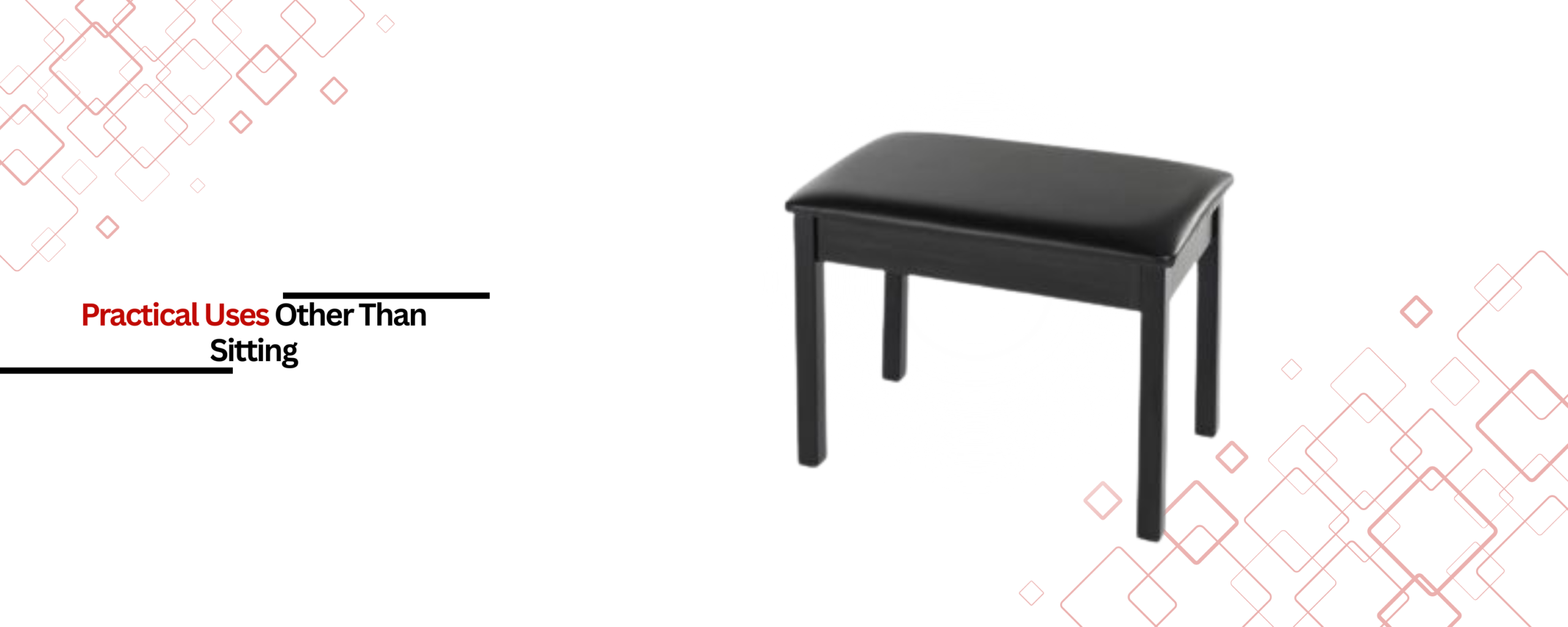A storage piano bench is frequently seen only as an additional seat, but its layout as organizational furniture is useful for practicing pianists. Aside from a sturdy surface to sit on while playing a piano, these benches have compartments designed to store essentials while also keeping the elegance of the practice space. Below, we look at the components, practical uses, and considerations of importance when selecting a storage bench.
To know more, read: Best Piano Benches for Beginners, Intermediate, and Professional Players
Parts of a Storage Bench for a Piano
Construction Features and Materials
Typical features of storage benches include a seat lid that lifts or hinges, an upper compartment with a hollow interior, and a secure frame. Cushions on the seat are usually made of foam or covered with soft fabric, and the top part of the seat is made of wood, metal, or composite materials for strength. To prevent sudden closing and noiseless preservation of the workshop, soft-close hinges are usually included.
Structure and Organization of Storage Area
The bigger space of a storage unit is often divided into sections to arrange metronomes, sheet music, and other accessories. Some models are deeper, which allows removable trays and flexible compartments. More modern models, like those by Yamaha, come with designated spaces and compartments that are lined with felt in order to keep sensitive materials such as tuning tools and electronics free from scrapes.
Practical Uses Other Than Sitting
Musical and Non-Musical Utility
The performer’s bench is ideal for multiple uses. Aside from serving as a piano bench, it also acts as an organizational center for music sheets, pedals, and even cleaning tools, helping maintain order around the piano. Other users have ‘benches’ that function in the same way to keep ‘valuables’ during practice. Apart from music, these modern benches can be used to store household items like books, blankets and other decor due to their box shapes, which help them blend into the modern living spaces.
Advantageous From An Ergonomic Standpoint
Posture and Comfort:
A padded seat with lumbar support provided by Roland’s ergonomic series assists in easing long-session practicing fatigue. With regard to elbow height, adjustable-height benches allow the placement of elbows at the level that is ergonomic in relation to the keyboard. Increased comfort is also achieved as the supports of the bench stabilize the piece, which greatly reduces other distractions.
Custom Design:
Bowen and Kaltungo state that leather, faux leather, and even fabrics that are resistant to staining can be used to cover these benches, making it possible for them to match the functional beauty and practicality. Other than that, storage benches can come in finishes like matte black, great for modern pianos or polished mahogany for classic pianos thus enabling the stylistic choice.
Key Considerations for Selection
Size, Capacity, and Security:
The storage bench’s proportions should be compatible with the height of the piano and the storage requirements of the user. Items that are too large for thinner designs may cause shallow compartments to be restrictive, while overly large designs can easily dwarf smaller rooms. Sensitive materials kept in shared or public spaces should be stored in lockable partitions, though these features can increase weight and complexity.
Maintenance and Durability
Care Guidelines:
The no-armrest chair design has to fit a piano and its height, as well as meet the storage requirements of the user. Bulky designs can dominate smaller spaces and shallow compartments do not leave any room for larger items. For private or commercial use, lockable compartments are preferable. However, these often add extra bulk, complicate the design, and alter balance.
Indicators of Quality:
If a product lasts more than two years, it often reflects outlook in its enduring nature. It is claimed that tough, affordable materials, like laminated wood or aluminum alloys, become balanced with super-practical portable structures. These provide a backbone both at home and on stage.
Conclusion
Brands like 5 Core, Roland, and Donner are instrumental in shaping the history of storage piano benches. As history unfolds in unpredictable ways, their designs focus on adaptability to meet emerging needs. Even as new inventions continue to transform musical devices, these brands preserve their legacy by balancing functionality with enduring construction, ensuring musicians are equipped to address needs and explore the unknown.




